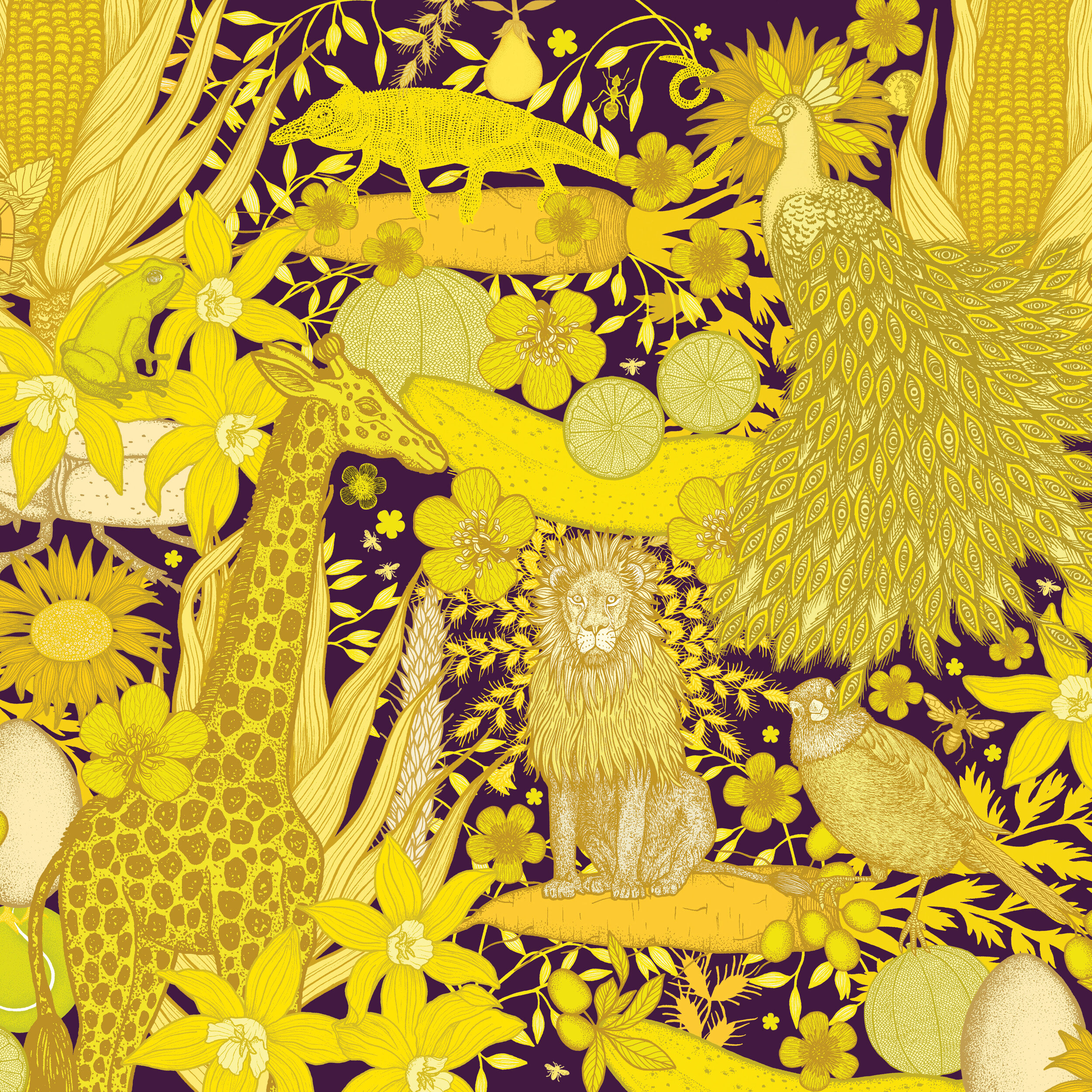EXPLOSION OF COLOUR
An infinitely dedicated artist of detail MICHAЁL CALLIOUX tells LA BOTANICA about the beauty of working with flowersin the variety of art mediums.
Interview by Contributing Editor Olya Titova.
LB: Your work is amazingly detailed. How do you achieve such precision in your artwork?
MC: All my illustrations are hand-drawn with 0.03mm to 1mm thin tip pens, which allows me to have a lot of details in the result. I'm striving for a sense of realism and pointillism when looking closely at my artwork. The same goes for my copper sculptures, also called Wall Jewelry, which I cut by hand with a jeweler's saw for more precision. I make everything by hand, which allows me to be quite meticulous and attentive to the smallest details, all while remaining as free as possible during the creative process.
LB: Your design exists in many formats interior design, wallpaper, design, postcards, and even wall jewelry. Can you explain?
MC: Of course, there are two parts to my work: Art and Design. Firstly, on the artistic side, you can find unique Wall Jewelry pieces in copper and gold, as well as a very limited series of etchings and original drawings. This body of work is presented in art galleries, notably in Paris and Tokyo. I can’t produce a lot, so I use my drawings to create new designs for wallpaper, greeting cards, scarves, wall decor, etc. It’s another way for me to work where I’m not restricted in the development process, as I can consider other surfaces like paper, silk, wood, leather, etc.
LB: About, do you have a favorite medium for your designs?
MC: I love to sculpt copper and turn it into unique pieces. There’s so much excitement behind creating jewelry and seeing it reach its final form in your own hands. But I also love to design products as I get to compose with colors, tell a story, and add a poetic spin to it. Developing wall decor is also just as enjoyable, as I can imagine giant landscapes. And last but not least, I love to play with colors to create unexpected associations; it’s a real treat. Lately, I’ve been designing a porcelain dinnerware collection for Bernardaud, and it’s really fascinating to work with technical constraints due to the material being used. For me, constraints aren’t a problem at all but a guide.
LB: Is nature your main source of inspiration?
MC: Yes, Nature is exhilarating. I travel a lot, which allows me to fill sketchbooks with drawings of flowers, trees, and animals I see along the way. I’m inspired by random encounters and discoveries. Two years ago, I drew a lot of pets like cats and dogs; it was a lot of fun. And what I like most of all is flowers. When you pay attention and look at them really closely, there are always incredible details that I can draw. Another inspiration of mine is the human body, so much so that I made a collection based on that theme in 2014. These days, I’ve been drawing faces, and I’ll probably keep on working on that.
LB: You have been drawing since childhood. Did you ever expect that your designs would be used by such iconic brands as Christian Dior?
MC: It's true that my mother would let me draw all over the walls when I was a kid. She was so patient with me. I already had the pleasure to work with Dior on a set of playing cards in tribute to Christian Dior. Then I designed the Christmas collection of Lenôtre, a famous French pastry chef. I also created for the event Les Rendez-vous aux Jardins around the theme of biodiversity for the French Ministry of Culture, and nowadays, I'm working closely with Bernardaud on their porcelain dinnerware.
LB: Do you use your own designs at home?
MC: Yes, I have to admit that all of my walls are covered with my designs, and I change them all the time. It allows me to test my artwork before presenting it to the public. But fortunately, there are also pieces from other artists like Magritte, Toulouse Lautrec, William Morris, etc. As well as there are framed butterflies, insects preserved in acrylic, and mementos from my travels. It’s all over my house, and my friends are really amused when they visit me; it’s a joyful cabinet of curiosities.
LB: The trend now is to work from shared workspaces or from home. How do you think this trend changed direction, style, and mission of interior design?
MC: I always work alone in my studio, and I love it because I can experiment and be messy without disturbing anyone. It’s freeing as it lets me test new techniques like paint and plaster. It can be isolating, though. Working in shared spaces helps to combine ideas and expertise because we’re always stronger together. Actually, I really enjoy working with other artists and artisans. I collaborated with a bookbinder for Dior in 2016, and in 2019 I presented a series of artwork called Specimen made in collaboration with Julie Yülle, an artist who creates with paper cut-outs.
LB: How are designers reacting to it?
MC: It’s really positive to be free and to be able to show such unexpected and new creations because designers are less restricted today. We notice that this era is really creative as new talent joins forces and brings new ideas to all areas of design in general. Social media is great for that too, since it gives a platform to young and upcoming talent. We can’t talk about a general trend anymore, but instead, we see multiple trends and huge possibilities at the same time. We have to make good use of that!








